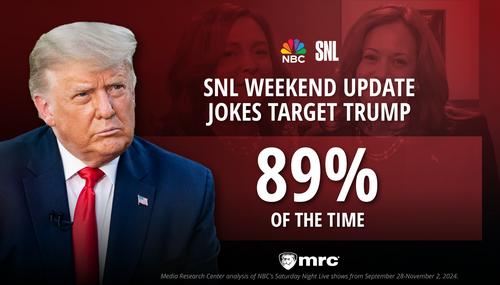
The Post's Oct. 29 "Style" section allotted two-thirds of the front page to observing the 79th anniversary of the Oct. 29, 1929 "Black Tuesday" stock market crash.
Normally such attention is given to anniversaries that fall more under the definition of a landmark: the 25th, 50th, 75th, etc. But with the American public seeing the economy as the top issues in the presidential election - and the media tendency to compare current economic conditions to the Great Depression already well-established - the Post has deemed the 79th anniversary worthy of attention.
"The bread lines didn't form overnight," Post reporter Paul Farhi wrote. "The banks didn't buckle all at once. And no one, despite urban legend, is known to have jumped out of a window in sorrow over financial ruin. Instead, the worst would come later, sometimes months and even years after Oct. 29, 1929, ‘Black Tuesday.' On that date -- 79 years ago today -- few people could conceive that an economic apocalypse was gathering, even as the ominous news soaked in."
Naturally Farhi - who has delivered cheap shots at the Republican presidential nominee Sen. John McCain in what even Editor & Publisher called "taking the gloves off" - compared the Great Depression to current economic conditions.
Farhi claimed a widening gap between rich and poor is a result of "tax cuts for the wealthy," without explaining how tax cuts are responsible. However, one might conclude he is referring to tax cuts limiting the redistributive powers of the government.
"The parallels between October 1929 and today are striking," Farhi wrote. "Although the contemporary economy is far larger and more complex than it was eight decades ago, consumers were deeply in debt then, too. The gap between rich and poor had widened, thanks in part to tax cuts for the wealthy. Amid it all, the stock market - lightly regulated - grew into a speculative bubble, driven to unsupportable highs by investors who used borrowed money to purchase shares."
At the end of Farhi's 1800+ word feature on the 1929 crash, he noted that government intervention made the Great Depression worse. But he maintained that government is the solution this time because it is "stimulating the economy with tax rebates and deficit spending," all of which will have to be paid back at some point.
"Washington only seemed to make things worse, historians say," Farhi wrote. "Rather than stimulating the economy with tax rebates and deficit spending -- two responses in our present crises -- Congress and President [Herbert] Hoover agreed to raise taxes to balance the federal budget. The Federal Reserve, meanwhile, tightened interest rates, starving the economy of money and deepening the economy's trouble."
One aspect of government Farhi didn't mention actually made the Depression worse, according to a 2004 report by economists at the University of California, Los Angeles (UCLA), was President Franklin Roosevelt's New Deal. It concluded that not Hoover, but Roosevelt's anti-free market policies prolonged the Great Depression by seven years.
A recent Business & Media Institute report, "The Great Media Depression," revealed the media compared current economic conditions to the Great Depression more than 70 times in the first six months of 2008. An additional tally found at least 157 more comparisons since July 1, 2008.




